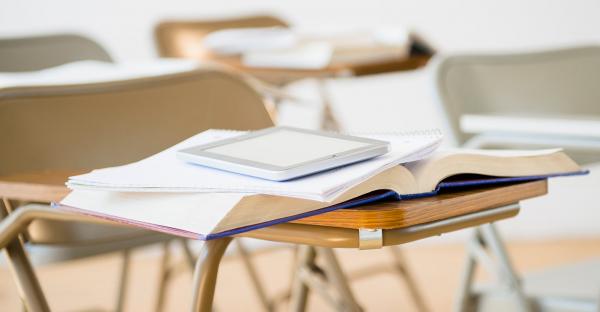
Employment
Viewpoints
Filter by:
New York Issues Tax Guidance for COVID-19 Telecommuters
November 2, 2020 | Blog | By Danielle Bereznay
The New York Department of Taxation and Finance has finally provided guidance regarding telecommuting tax liability for nonresident employees working outside of New York because of the COVID-19 pandemic. In short: employees telecommuting because of COVID-19 will generally still be required to pay New York taxes on income they earn.
Read more
NYC Releases Updated Paid Sick and Safe Time Notice of Employee Rights
November 2, 2020 | Blog | By Michael Arnold
A quick update to our earlier posts on New York State and New York City’s paid sick leave laws. The agency that enforces NYC’s paid sick and safe time law – the New York City Department of Consumer and Worker Protection – has just released its updated sick and safe time Notice of Employee Rights, which you can access here. We highlight some compliance issues to consider below.
Read more
REMINDER: Massachusetts Paid Family and Medical Leave Next Steps
October 23, 2020 | Blog | By Natalie C. Groot, Emma Follansbee, Patricia Moran
New York State Addresses Paid Sick Leave Requirements in New Guidance
October 23, 2020 | Blog | By Corbin Carter, Michael Arnold
This week, New York State issued guidance and an FAQ document regarding the State’s new paid sick leave law (“NYPSL”). As a reminder, New York State enacted statewide paid sick leave requirements for employers under Section 196-b of the New York Labor Law and they took effect on September 30, 2020. We provided an overview of the new NYPSL requirements for New York State employers in our previous post.
These permanent paid sick leave requirements (which differ from the COVID-19 quarantine leave measures that New York State enacted earlier this year) require New York employers to provide all employees with sick leave (which varies based upon the employer’s size), and grant employees the ability to use accrued sick time starting January 1, 2021.
The new guidance issued by New York State provides some clarity on select NYPSL topics, but leaves a number of questions unresolved. We provide a summary of key new information from the guidance for employers below:
Read more
These permanent paid sick leave requirements (which differ from the COVID-19 quarantine leave measures that New York State enacted earlier this year) require New York employers to provide all employees with sick leave (which varies based upon the employer’s size), and grant employees the ability to use accrued sick time starting January 1, 2021.
The new guidance issued by New York State provides some clarity on select NYPSL topics, but leaves a number of questions unresolved. We provide a summary of key new information from the guidance for employers below:
COVID-19 Telecommuting Tax and Leave Issues for Employers
October 20, 2020 | Blog | By Emma Follansbee, Michael Arnold
Months into the COVID-19 pandemic, many employer telecommuting arrangements remain in place, with several large corporations opting to extend these arrangements well into 2021. The benefits of such arrangements have been clear for many employers during the pandemic, including that they permit continued productivity while keeping employees safe. However, the longer that employees remain out of the office, the more telecommuting-related issues arise, including with respect to taxation of employee income and leave requirements, which we discuss below.
Read more
Navigating Politics in the Workplace During the Election Season
October 8, 2020 | Blog | By Michael Arnold
With the presidential election less than a month away, it is more important than ever that employers proactively manage their work environment to protect against the potential pitfalls that can arise when political discussions occur in the workplace. The new remote working environment in which many employers find themselves only adds a layer of complexity to this challenge. We discuss this difficult issue further below.
Read more
Statutory – not Shareholder – Activism: Governor Newsom Signs California’s Diversity Mandate into Law
September 30, 2020 | Blog | By Jennifer Rubin
California has enacted the nation’s first diversity mandate for public company boards. As we previously reported, the new law (AB 979) builds upon California’s first- in-the nation statutory gender mandate for public company boards.
Read more
Paid Sick Leave Arrives for New York State Employers & New York City Amends Its Own Paid Sick Leave Law
September 30, 2020 | Blog | By Corbin Carter, Michael Arnold
The New York State Paid Sick Leave Law’s accrual provisions go into effect today, September 30, 2020. In April, Governor Cuomo signed into law new permanent paid sick leave requirements for all New York State employers (separate from COVID-19 leave which was passed in March and went into effect immediately). Employees may begin using sick leave for purposes consistent with the law on January 1, 2021. Although we expect the New York State Department of Labor to issue guidance or regulations on the new law, the agency has not done so to date. We will continue to monitor for any updates.
Meanwhile, the New York City Council swiftly passed an updated Sick and Safe Time law to align the City’s law more closely with the New York State sick leave law. But there are some important differences with the State’s sick leave law.
Our full analysis of New York State’s new paid sick leave law can be found here. More information on the City’s updated sick leave law, which also went into effect today, is addressed further below.
Read more
Meanwhile, the New York City Council swiftly passed an updated Sick and Safe Time law to align the City’s law more closely with the New York State sick leave law. But there are some important differences with the State’s sick leave law.
Our full analysis of New York State’s new paid sick leave law can be found here. More information on the City’s updated sick leave law, which also went into effect today, is addressed further below.
Updated: EEOC Issues ADA and Title VII Guidance for Employers on COVID-19
September 25, 2020 | Blog | By Danielle Bereznay
Updated: The EEOC has provided employers with supplemental guidance on navigating the COVID-19 outbreak, addressing issues such as COVID-related harassment and screening employees who are reporting to work. The EEOC reminded employers that while the anti-discrimination laws, including the ADA and the Rehabilitation Act, continue to apply during the COVID-19 pandemic, these laws do not interfere with, or prevent employers from following, the guidelines and suggestions issued by the CDC or state and local public health authorities regarding COVID-19.
Read more
Updated: Department of Labor Guidance for Families First Coronavirus Response Act
September 20, 2020 | Blog | By Danielle Bereznay, Michael Arnold
The Department of Labor has again updated its guidance regarding the Families First Coronavirus Response Act ("FFCRA").
Below we summarize the DOL’s interpretative guidance, and note in bold where the DOL has either reaffirmed or changed its guidance in light of the federal court decision. As a reminder, the law expires on December 31, 2020.
Read more
Below we summarize the DOL’s interpretative guidance, and note in bold where the DOL has either reaffirmed or changed its guidance in light of the federal court decision. As a reminder, the law expires on December 31, 2020.
California Seeks to Expand its Board Diversity Mandate
September 9, 2020 | Blog | By Jennifer Rubin
COVID-19, the New School Year, and Working Parents
September 8, 2020 | Blog | By Delaney Busch, Jennifer Rubin, Michael Arnold
The reopening of schools during the COVID-19 pandemic continues to present challenges for working parents and the businesses that employ them. Not surprisingly, a one-size-fits-all approach for employers to appropriately manage working parents is likely difficult, if not impossible, to craft. In this post, we highlight some of the risks employers may face while offering some guidance regarding best practices to address these risks.
Read more
AB 5 “2.0” – California Tweaks its Independent Contractor Ban
September 8, 2020 | Blog | By Jennifer Rubin
California has amended its independent contractor law to make more jobs and professions exempt from the “ABC” test that AB 5 codified last year. Governor Newsom signed the amendment into law on September 4, 2020. It becomes effective immediately. See the changes made to the law.
Read more
Massachusetts Paid Family and Medical Leave 2020 Regulations – Focus on the Private Plan Exemption
August 13, 2020 | Blog | By Patricia Moran, Natalie C. Groot, Emma Follansbee
Under the Massachusetts Paid Family Leave Law, M.G.L. c. 175M (“MAPFML”), employees and other covered individuals in the Commonwealth will be entitled to a generous set of new leave benefits and rights beginning January 1, 2021. The Department of Family and Medical Leave (the “Department”) recently issued updated MAPFML regulations, effective July 24, 2020 (the “2020 Regulations”). These regulations make several key changes to the MAPFML regulations issued in 2019 (the “2019 Regulations”). In our companion post, we cover the key changes between the 2019 Regulations and the 2020 Regulations. This post examines, in depth, changes affecting the MAPFML “Private Plan” exemption pathway.
Read more
Massachusetts Department of Family and Medical Leave Finalizes Revised Regulations: Here’s What You Need to Know
August 13, 2020 | Blog | By Patricia Moran, Natalie C. Groot, Emma Follansbee
Under the Massachusetts Paid Family Leave Law, M.G.L. c. 175M (“MAPFML ”), employees and other covered individuals in the Commonwealth will be entitled to a generous set of new leave benefits and rights beginning January 1, 2021. On July 24, 2020 , the Department of Family and Medical Leave (the Department) issued updated MAPFML regulations effective July 24, 2020 (the “2020 Regulations”). These regulations make several key changes to the MAPFML regulations issued in 2019 (the “2019 Regulations”). In our companion post, we cover the key changes between the 2019 Regulations and the 2020 Regulations. This post examines, in depth, changes affecting the MAPFML “Private Plan” exemption pathway.
Read more
Key Parts of DOL FFCRA Guidance Invalidated by New York District Court
August 11, 2020 | Blog | By Delaney Busch
A New York federal judge recently struck down certain aspects of the U.S. Department of Labor’s (“DOL”) Final Rule and accompanying guidance interpreting leave entitlements under the Families First Coronavirus Response Act (“FFCRA”). This decision increases the number of employees eligible for COVID-19-related leave, and will require employers to revisit their leave administration policies and procedures. However, it’s is unclear at this time whether New York will request the Court impose a nationwide injunction or injunctive relief that extends only to New York employers.
Read more
Return to Work COVID-19 Testing Considerations
August 10, 2020 | Blog | By Danielle Bereznay, Michael Arnold, Corbin Carter
As employees increasingly transition back into the physical workplace, employers have begun to grapple with whether and how to deploy COVID-19 diagnostic testing as a return-to-work solution. Many employers want to avoid extended employee quarantine or isolation requirements that prevent their employees from returning to the office for weeks and disrupt their operations. But is this potential solution legal? And is it effective? Below we discuss practical considerations for employers considering a return to work COVID-19 testing strategy.
Read more
New York State Judge Allows Sexual Harassment Claim to Proceed in Court, Invalidating Arbitration Agreement
July 29, 2020 | Blog | By Corbin Carter, Michael Arnold
A New York State Trial Court judge recently ruled that an agreement between a company and an employee to arbitrate sexual harassment claims was unenforceable due to 2018 amendments to New York State’s Human Rights Law, which prohibit such arrangements. The decision creates a split in authority, as a 2019 decision by a judge in the Southern District of New York – a federal court – upheld the enforceability of such arbitration agreements, ruling that the Federal Arbitration Act (“FAA”) preempts the New York statutory prohibition. This decision also now creates some uncertainty around the viability of arbitration agreements in New York where employees agree to arbitrate discrimination claims. We summarize the decision below.
Read more
Vaccinate or Terminate – Mandatory Vaccination As Workplace Policy
July 28, 2020 | Blog | By Jennifer Rubin
Massachusetts Offices are Subject to Mandatory Screening as Part of Phase III Reopening
July 8, 2020 | Blog | By Danielle Bereznay
On July 6, Massachusetts moved into Phase III of its reopening plan, which allows many businesses and offices spaces to return to the physical workplace. With Phase III comes a new mandatory safety standard: screening employees for COVID-19 or close contact at the beginning of each shift. While the Office Spaces Safety Standards are geared toward office workplaces, we interpret this requirement to encompass an employer’s obligations to both employees and visitors to the office.
Read more
Explore Other Viewpoints:
- Data Centers & Digital Infrastructure
- AI: The Washington Report
- Antitrust and Federal Regulation
- Appellate
- Arbitration, Mediation & Alternate Dispute Resolution
- Artificial Intelligence
- Awards
- Bankruptcy & Restructuring
- California Land Use
- Cannabis
- Class Action
- Complex Commercial Litigation
- Construction
- Consumer Product Safety
- Corporate Governance (ESG)
- Cross-Border Asset Recovery
- DEI Legal Developments
- Debt Financing
- Direct Investing (M&A)
- Diversity
- EB-5 Financing
- Education & Nonprofits
- Employment
- EnforceMintz
- Environmental (ESG)
- Environmental Enforcement Defense
- Environmental Law
- Environmental, Social, and Corporate Governance (ESG)
- FDA Regulatory
- False Claims Act
- Federal Circuit Appeals
- Financial Institution Litigation
- Government Law
- Growth Equity
- Health Care
- Health Care Compliance, Fraud and Abuse, & Regulatory Counseling
- Health Care Enforcement & Investigations
- Health Care Transactions
- Health Information Privacy & Security
- IP Due Diligence
- IPRs & Other Post Grant Proceedings
- Immigration
- Impacts of a New US Administration
- Insolvency & Creditor Rights Litigation
- Institutional Investor Class Action Recovery
- Insurance & Financial Services
- Insurance Consulting & Risk Management
- Insurance and Reinsurance Problem-Solving & Dispute Resolution
- Intellectual Property
- Investment Funds
- Israel
- Licensing & Technology Transactions
- Life Sciences
- Litigation & Investigations
- M&A Litigation
- ML Strategies
- Managed Care
- Medicare, Medicaid and Commercial Coverage & Reimbursement
- Mergers & Acquisitions
- Patent Litigation
- Patent Prosecution & Strategic Counseling
- Pharmacy Benefits and PBM Contracting
- Portfolio Companies
- Privacy & Cybersecurity
- Private Client
- Private Equity
- Pro Bono
- Probate & Fiduciary Litigation
- Products Liability & Complex Tort
- Projects & Infrastructure
- Public Finance
- Real Estate Litigation
- Real Estate Transactions
- Real Estate, Construction & Infrastructure
- Retail & Consumer Products
- Securities & Capital Markets
- Securities Litigation
- Social (ESG)
- Special Purpose Acquisition Company (SPACs)
- Sports & Entertainment
- State Attorneys General
- Strategic IP Monetization & Licensing
- Sustainable Energy & Infrastructure
- Tax
- Technology
- Technology, Communications & Media
- Technology, Communications & Media Litigation
- Trade Secrets
- Trademark & Copyright
- Trademark Litigation
- Unified Patent Court (UPC)
- Value-Based Care
- Venture Capital & Emerging Companies
- White Collar Defense & Government Investigations
- Women's Health and Technology







